As pet owners, we want our dogs and cats to live long, healthy lives, so it’s important to recognise that their diet has a big part to play in this! It can be difficult sometimes to know what to do for the best, given the amount of information and the choice of pet food available. We’re taking a look at the alternative pet food out there, and the pros and cons of each, to create a one-stop-shop for helping to solve your pet food dilemmas!
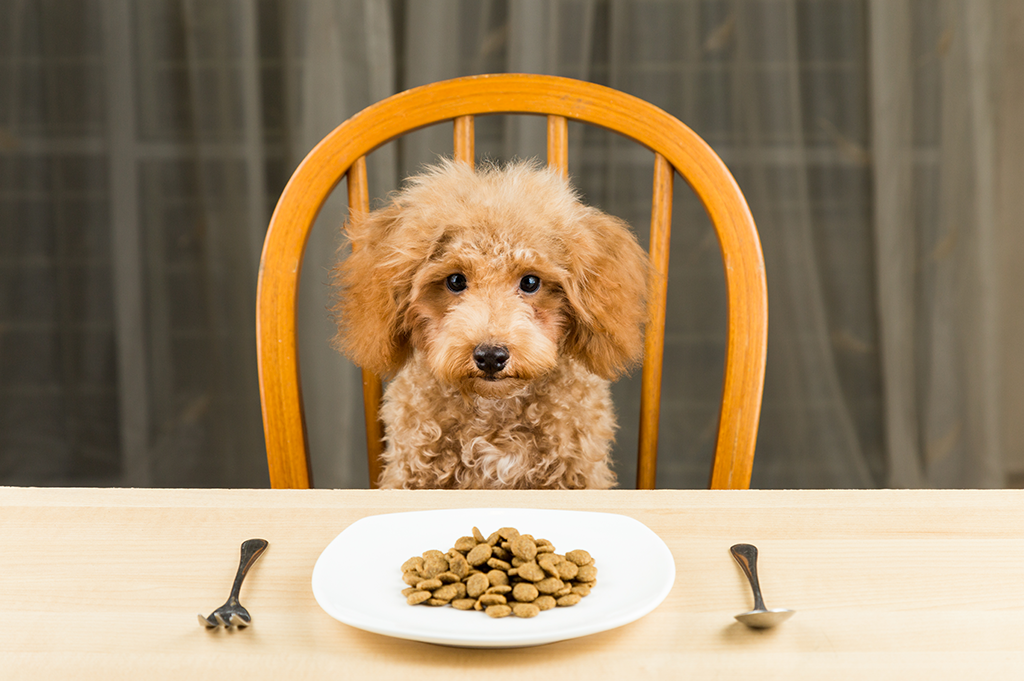
Vegan pet food
Plant-based diets are becoming increasingly popular amongst us humans, and some pet owners are considering whether or not to feed their dog or cat a vegan diet too. But is it a good idea?
Can dogs be vegan?
Dogs, like humans, are omnivores, so technically don’t have to eat meat to survive. Traditionally as well, they’re scavenger types, and have evolved to be able to eat a range of different food types, not only meat. This means the answer is; yes, a dog can be vegan, but introducing them to a plant-based diet should not be undertaken lightly. If you’re considering doing so, your vet or an animal nutritionist should always be consulted. This is to make sure that your dog’s meals include all the vitamins and minerals they need, aside from protein, to stay healthy.
Can cats be vegan?
Cats are different from dogs, as being obligate carnivores, they do need meat to survive. This is because there are specific minerals and amino acids they require which they can only get from animal proteins. For example, without taurine, cats can suffer from heart disease and problems with their vision, and taurine is only naturally available from meat. Vitamin A is also essential to cats, but they are unable to obtain this from carotene as humans do. Instead the best source of vitamin A for cats is liver. A cat can only eat a vegan diet with careful supervision and adequate supplementation, so might be best avoided where possible.
Are there any vegan pet foods on the market?
Yes! You can buy ready-prepared vegan pet food, although you might not see it in your local supermarket and would have to purchase it online. There are also companies who are experimenting with the development of protein-rich fungi and laboratory grown meat which could one day be hitting the shelves. As stated above, however, you should always speak to your vet to determine the best course of action if you’re considering changing your pet’s diet.
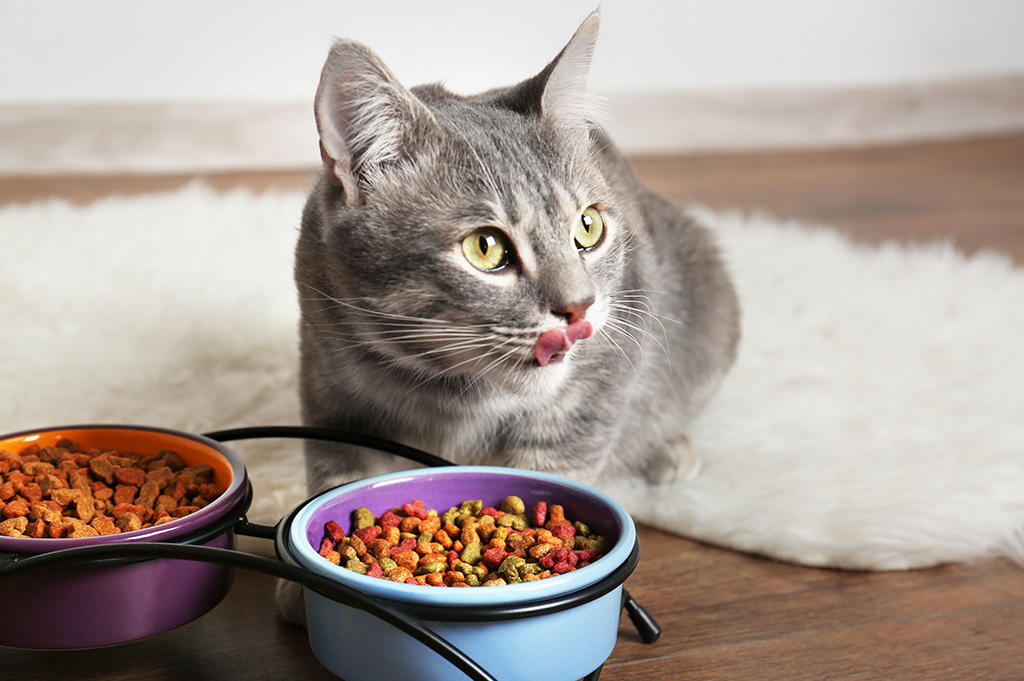
Raw pet food
Since it was first introduced in 1993, raw food diets for pets have increased in popularity. The idea behind the diet is to mimic the type of food our dog’s ancestors would have eaten before they became domesticated, similar to the paleo diet for humans. It’s a controversial way of feeding that has many fans as well as detractors. Here are the pros and cons.
Potential benefits of raw pet food
A typical raw food diet for cats and dogs will be composed of muscle meat, organ meat, bones, vegetables, raw egg, fruits, seaweed and possibly supplements such as fish oil. The proponents of raw pet food claim that by eliminating the use of processed foods, they won’t be exposed to any problematic additives and that it can help deal with any allergies and intolerances an animal might exhibit. Fans say that raw food can lead to pets having shinier coats, smaller stools, healthier teeth and skin, as well as more energy. None of these have been clinically proven, although given the popularity of the diet, it could be the case that owners have been seeing some benefits.
Potential problems with raw pet food
While there is very little wrong in serving your pet a good mixture of raw foods, attention needs to be paid in order to make sure they’re getting all the nutrients they need. Some owners might equate raw food with feeding their dog or cat only meat, but this wouldn’t be a healthy choice over a long period of time. Attention also needs to be paid to feeding animals bones, as these might lead to choking, and can splinter, leading to an internal puncture.
There is also the problem of bacteria and parasites. Commercially produced raw food is usually bought frozen and then defrosted at home as and when it’s needed. While the process of freezing can kill some parasites, it won’t kill off any bacteria, such as E coli or salmonella. There is a potential that these could make your dogs feel unwell, and any cross contamination could affect humans too.
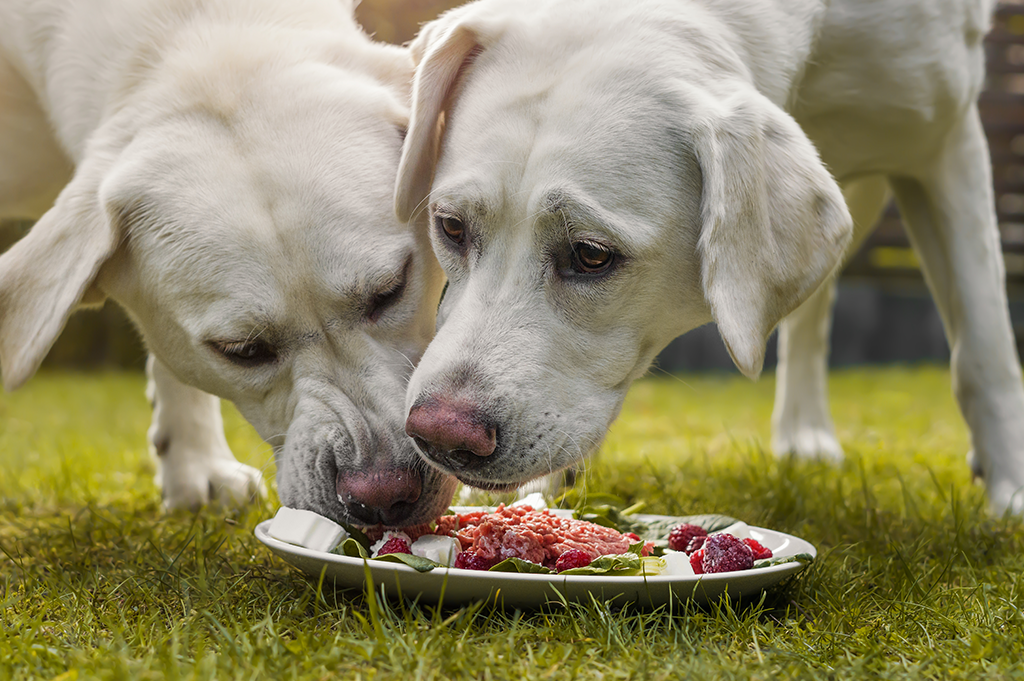
Grain-free pet food
The availability of grain-free pet food has really increased over the past decade. We’re delving into whether the perks of not giving grain to your dog or cat outweighs the cons.
Why might you feed your pet a grain-free diet?
The recent increase in grain-free pet food has grown with the trend for gluten-free diets within humans. This means the popularity of grain-free diets for pets could have something to do with the humanisation of dogs and cats which has become more common in recent years. The popularity of high protein, low carbohydrate diets might also sway people’s decision in doing away with grain within their pet’s food.
One often talked about reason why people might choose grain-free food for their dog or cat is due to allergies. Some pets can develop an intolerance or allergy to certain grains or gluten, but this is rare. Allergies to beef and dairy, for example, can be much more common. If your pet has been tested for allergies by your vet, however, and they have recommended a grain-free diet, following this advice will be the best course of action. Grain-free diets can also be helpful for cats living with diabetes.
Pitfalls of grain-free pet food
If your dog or cat has not been diagnosed with any kind of allergy, or your vet hasn’t recommended grain-free food, then your pet should be able to eat grain as part of their diet. One common misconception is that grain-free pet food always contains lower levels of carbohydrate, but this isn’t always the case. Often, when not using grain in pet food, companies will replace them with other foods such as potato, which in fact contain a greater amount of carbohydrate and fewer proteins.
Grain-free vs gluten-free
There’s also often a confusion between the terms grain-free and gluten-free. Gluten is a protein found in certain grains, specifically wheat, barley and rye, so eliminating these grains from food will make it gluten-free. Not all grains, however, contain gluten, such as buckwheat, rice and millet to name a few. The upshot of this is that not all gluten-free pet foods will be grain-free, but all grain-free pet food will be gluten-free.
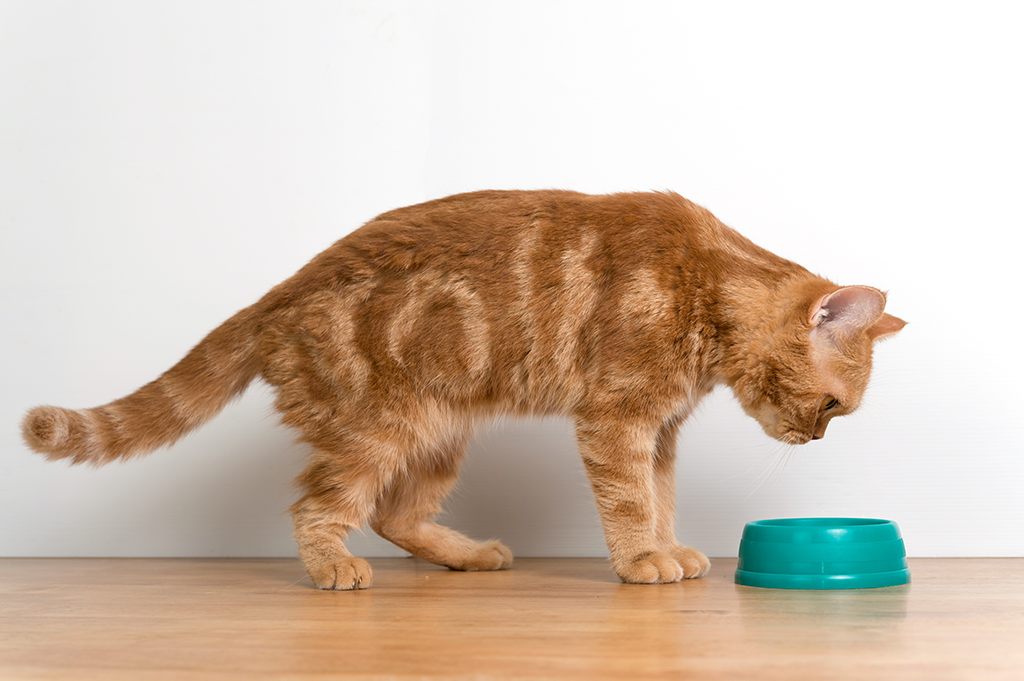
Insect-based pet food
A more recent product to reach our shelves is insect-based pet food, the first example of which went on sale in the UK just last year. Why insects, and how can they be of nutritional benefit to your pet?
The case for insects
The climate crisis has been taking centre stage for a while now, and the environmental impact of the meat industry has been of concern to many. Globally it’s estimated that pets consume around 20% of the meat and fish produced, so any way of scaling this back could make quite a big difference!
Insects have long been suggested as a means of providing quality protein for humans, without making such a large impact upon the environment. It’s only more recently, however, that the idea has gained traction concerning pet food. Producing insects for consumption requires much less land and water, and the process generates very low emissions. Pet food produced in this way could really help to make a difference to climate change globally.
Is insect-based pet food good for pets?
As a source of protein, insects stack up really well against traditional meats; crickets are 69% protein compared to just 29% in beef. They also contain a good range of amino acids, vitamins and minerals. Given that dogs and cats normally thrive on a high-protein diet, insects could effectively replace other meats. As always, care needs to be taken when switching pet food, because not every food type will be suitable for every pet, and you need to make sure your cat or dog is able to access all the nutrients they need to live a healthy life. If you have any doubts or questions, ask your vet for advice.
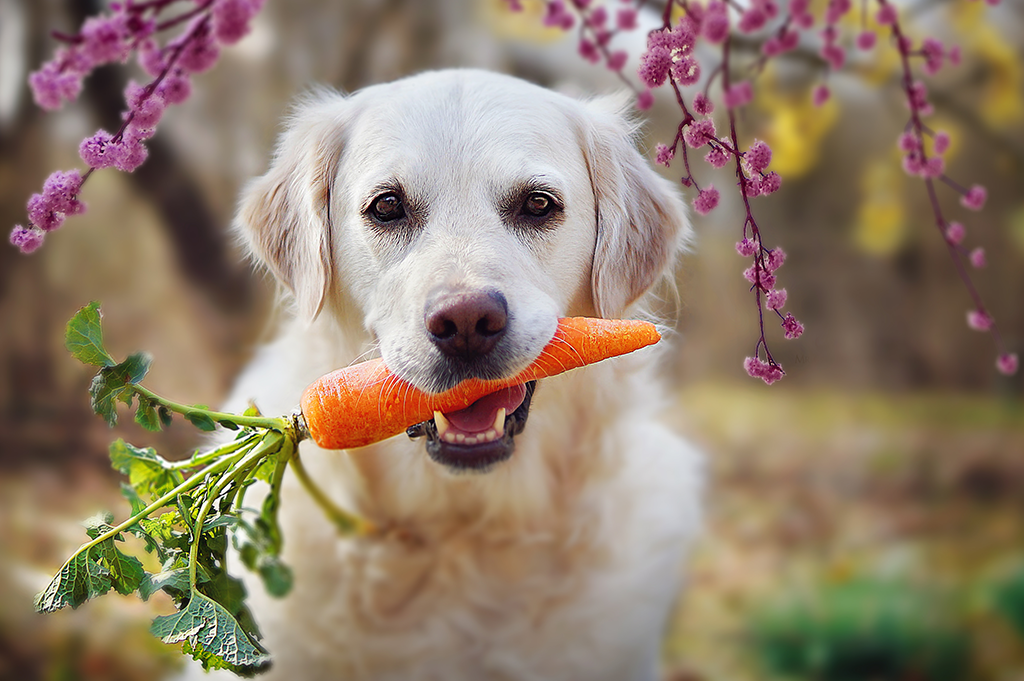
Home-cooked food
The last alternative food to feed your pet on our list is home-cooked food. This one is similar to raw food, in that owners would mix different foodstuffs together themselves, just with more cooking involved! Find out more about the potential benefits as well as problems below.
Why feed your pet home-cooked food?
Increasingly, people are becoming concerned about the additives and chemicals in both their food as well as their pets’, and wish to feed their dogs and cats as unprocessed a diet as possible. Giving your furry friend home-cooked pet food can achieve this, without the problem of potential pathogens that you might find with raw food. Due to the fact that you’re buying and combining ingredients yourself, it can be far easier to know exactly what you’re feeding your pet. It can also be helpful if your pet is a particularly fussy eater, as you can build meals around their tastes.
Is home-cooked pet food a good idea?
The suitability of home-cooked pet food for your dog or cat will depend largely upon the amount of time you have to dedicate to preparing their food. Feeding your pet a home-made diet will require a certain amount of planning and, obviously, cooking, to ensure they’re getting all the essential nutrients they need. When prepared correctly, home-cooked meals can be a great choice for any pet, but you do need to know what you’re doing. If you don’t have the time to dedicate to your pet’s nutrition, and they don’t have any dietary sensitivities, a ready-made complete dog or cat food could be just as good for their health, if not better.
Whatever you feed your furry friend, the most important thing is that they remain fit and healthy for your adventures together! If you’re considering changing your cat or dog’s diet in any way, we would always recommend speaking to your vet first, as they might be able to give you some helpful advice. The Petfoodology website is also a valuable resource dedicated to informing the public on all things pet-food-related.
As a pet owner, you’ll want to do all you can to help your dog or cat through thick and thin. That’s why it might be wise to consider taking out pet insurance to help protect them. At The Insurance Emporium, we offer flexible Dog Insurance and Cat Insurance policies, with cover for Vet’s Fees up to £8,000* on certain policies. You could also get up to 30% discount^. Take a look at our Pet Insurance product pages to find out more!
* Vet’s Fees cover up to £8,000 available on lunar monthly Lifetime Gold policies.
^ The 30% discount is made up of 20% Introductory Discount plus 10% Multi-pet Discount (if appropriate). The Introductory Discount is available for the first 12 premium payments on lunar and calendar monthly policies or one premium payment on annual policies.
All content provided on this blog is for informational purposes only. We make no representations as to the accuracy or completeness of any information on this site or found by following any link on this site. We will not be liable for any errors or omissions in this information nor for the availability of this information. We will not be liable for any loss, injury or damage arising from the display or use of this information. This policy is subject to change at any time.


